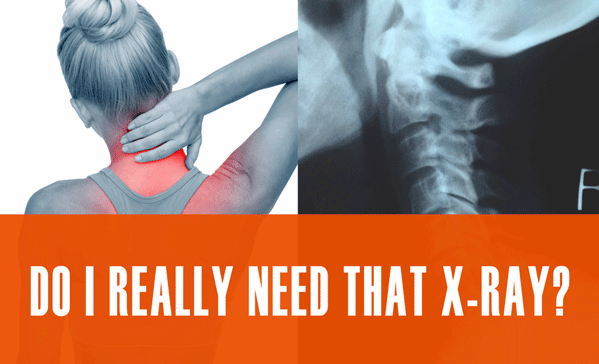As a Chiropractor I deal with many neck and back pain patients day in and day out, one of the most common questions I hear from new patients is “Do I need X-rays?” This is a question that concerns me a great deal, because it stems from a common misperception engrained in our society—“if something wrong can be found on my X-rays/CT/MRI, then it must be the cause of my problem.”
In the case of spine pain, not only do patients love to see structural evidence of spinal degeneration, so do most of their doctors. Despite what the scientific evidence shows, they put two and two together, and voila! problem solved… or is it?
But… My Doctor Said I Have Spinal Degeneration.
First, I want you to take a deep breath and relax. A recent review shows that 37% of 20-year-olds and 96% of 80-year-olds walk around with spinal degeneration and don’t even know it. If your age is between 20 and 80, then your chance of having some kind of spinal degeneration falls between 37%-96%. This leads the researchers to conclude that what your doctor sees on your films probably has NOTHING to do with your pain.
Not convinced? Let me further elucidate the idea. Most patients seek care because of an initial severe acute event. This is often when they find out, for the first time, how messed up their spines look. Being vulnerable and scared, some end up paying for a yearlong treatment plan for chiropractic care, and some opt for surgery. What the patients, their chiropractors, and their surgeons don’t realize is that findings on their imaging are highly unlikely to represent any new structural change. In other words, most of what they see has been there for a long time and has NO association to acute events.
I often ask my patients, if you think the “bone spur” is causing your pain, how is it that you didn’t have pain the day before? As they know, the “bone spur” couldn’t possibly grow overnight, they realize it is not the source of their pain. They then understand why our treatments often focus on neurology and function, rather than on structure.
What about chronic pain, you say? It is fairly well-established that cognitive-behavioral problems play a big role in chronic pain patients. In other words, attention seeking mentality, medication dependency, fear, anxiety, and depression can all perpetuate pain. Furthermore, your brain gets darn good at sensing pain when the pain circuits get activated again and again. It is a vicious cycle that eventually turns into what we call central sensitization. That’s when a little stimulation causes disproportionate pain, just as it doesn’t take much to tick off a woman affected by PMS. Chronic pain certainly cannot be narrowed down to a simple structural cause.
What Then Is Causing My Pain?
One cannot really answer this question fully without explaining what “pain” is, but that’s for another time. For the time being, we need to understand that pain is a complex phenomenon. It is more a neurological problem than a structural problem. It is confounded by emotional factors, medication used, and compensation issues, just to name a few.
“One may realize that chronic low back pain illness may not stem from a mechanical spinal disorder alone…It would follow that expecting to identify a single cause for this symptom complex is impractical and any single test may not be a reasonable approach.”
A Good Old Physical Exam Over X-rays
If you truly understand spinal degeneration and pain as I understand them, then you will never go to a chiropractor, or any doctor for that matter, who replaces a thorough history and physical exam with a few X-ray films. Available evidence clearly shows that routine spinal x-ray/CT/MRI does NOT improve clinical outcomes. On top of lacking clinical benefits, these x-ray and CT scans subject patients to unnecessary radiation exposure. To avoid unnecessary imaging procedures, clinicians and patients ought to stop looking at pain and dysfunction from a pure mechanistic perspective. It is time to embrace functional and neurological testing and rehabilitation.
Degeneration can certainly lead to problems. When your spine lacks movement and becomes degenerated, the signals that feed your brain become distorted, but that’s another story. The take home message is that degeneration is rarely the sole cause of your pain. Don’t let anybody lead you to think otherwise.
References:
- http://www.ncbi.nlm.nih.gov/pubmed/25430861
- http://www.ncbi.nlm.nih.gov/pubmed/17088193
- http://www.ncbi.nlm.nih.gov/pubmed/20332288
- http://www.ncbi.nlm.nih.gov/pubmed/25180773
- http://www.ncbi.nlm.nih.gov/pubmed/15062713
- http://www.ncbi.nlm.nih.gov/pubmed/21214357
About the Author
Dr. Lily Semrow is a Board Certified Chiropractic Neurologist who focuses on Neuro-Structural Correction. She has a B.S. in Nutrition and a doctorate in Chiropractic. She has a passion for serving families, and helping people who could not get better through traditional and alternative means.

